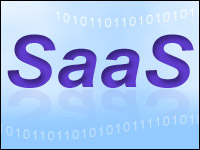
What if you answered the phone one day to a friendly voice offering tech support for some software that had been troubling you? “Not possible,” you’d say. We all know the drill with technical difficulties. We call up the software company during business hours and then sit on hold only to get an agent who barely knows the software better than we do. A knowledgeable tech support specialist certainly isn’t going to call us at the moment when we’re beating our heads against the computer screen. Or will they?
Industry insiders call this “Pinpoint Retention” (PPR) — the ability to detect and resolve customer service issues before they have a chance to become actual problems for the client. The ultimate goal of this specialized retention effort is to prevent customer frustration during the product learning curve that might lead some to cancel membership.
It is a new kind of retention effort that is a byproduct of online software applications commonly referred to as “Software as a Service” (SaaS). These suddenly ubiquitous applications include some of the more recognizable names like eBay and Gmail, but there are hundreds of small competing applications out there too, which run the gamut of online services.
SaaS applications differ from client-side software in that there is no CD-ROM installation disk, and user data is stored online rather than on the user’s computer. It is this difference that allows these small companies to develop PPR systems aimed squarely at customer satisfaction and retention.
Surprises Can Yield Benefits
To begin the PPR process, anonymous customer usage data is analyzed by the software vendor, often but not always in real-time. As one might expect, data mining begins at login and continues throughout the entire visit. For example, with Google Docs, users store documents on Google’s servers rather than keeping them on their local hard drive. This allows users to access documents from anywhere, which is why they use the service in the first place, but as they navigate Google’s application they leave multiple breadcrumb-like trails behind them that can be used to develop PPR metrics.
How comprehensive those trails are depends entirely upon how much information the company chooses to review. In most cases, every action executed by a visitor on a SaaS site is recorded. This is not so intrusive as it may at first seem. The data is not collected in order to analyze you, the user, but rather to refine the SaaS service in general, making the product better for everyone.
In the case of Timesheets.com, which is Web based software that manages employee time sheets, data is stored offline in an application running parallel to the Web-based software. The PPR tool is designed to monitor and analyze client statistics, feature acceptance and data trends. The tool also monitors user tendencies, like whether or not customers are actually using features as intended.
Oftentimes, surprises in this type of analysis can lead to peripheral benefits — like the addition of new features or product abilities. When the analysis tool recognizes a problem with the way a customer is using the website, a staff member is flagged to contact the customer to offer support — in many cases before the customer even realizes that it’s needed.
As one might imagine, if a company’s analysis tools are designed well, they will have broad uses and implications throughout the organization, from customer service to product development and life-cycle decisions. The power of PPR analysis is so far reaching that it is often a major decision variable responsible for leading SaaS companies in new directions.
This type of insight is missing with traditional installed software where intimate, although anonymous, data is simply not available. PPR analysis can both point out unhealthy customer trends that might lead to a service cancellation and return valuable feedback to developers about the usefulness of the product. This is how PPR provides proprietors with unprecedented insight into product usage and can help predict the needs of the customer well in advance of problems.
More Engagement
The customer service advantages offered by a SaaS company don’t end with PPR. SaaS companies use this real-time ability to share computer screens with customers for impromptu product demonstrations or support. SaaS companies like GoToMeeting.com offer such a product to support their customers in this manner. SaaS companies can also log directly into a customer account to help with settings or troubleshooting. This makes customer service faster, less prone to mistakes, and more satisfying for the client.
In addition to enhanced customer service comes an enhanced product. Web-based software is frequently updated with new features and functionality at no additional cost or hassle to the customer. This not only ensures the customer is constantly using the best version of the software, but also allows company retention experts to point out features that didn’t exist when the customer initially enrolled in the service.
Of course, not all SaaS companies use PPR or other tools for enhanced customer support purposes. Mammoth companies like Google and Yahoo are dealing with intractable numbers. Yahoo doesn’t even offer sales support to prospects of its registrar business, reserving phone or email contact information for already-paying customers.
Meanwhile, the smaller companies can afford to maintain a more engaging level of attention, making modest numbers of targeted retention calls on a continuous basis. Similarly, customers who appear to be using features continuously and within expected parameters can be given less attention. Well written product metrics combined with trained retention experts make it possible for smaller companies to gain an edge over larger competitors and over traditional installation-based software vendors.
Although not all SaaS companies take full advantage of the intimate customer service possibilities yielded from this new type of customer relationship, PPR is an inherent benefit offered by SaaS applications in general, and a trend that has been growing more common with each passing cyberspace-influenced month.
Joel Slatis is the president and CEO ofTimesheets.com, a Web-based time tracking service.













































Social CRM
See all Social CRM